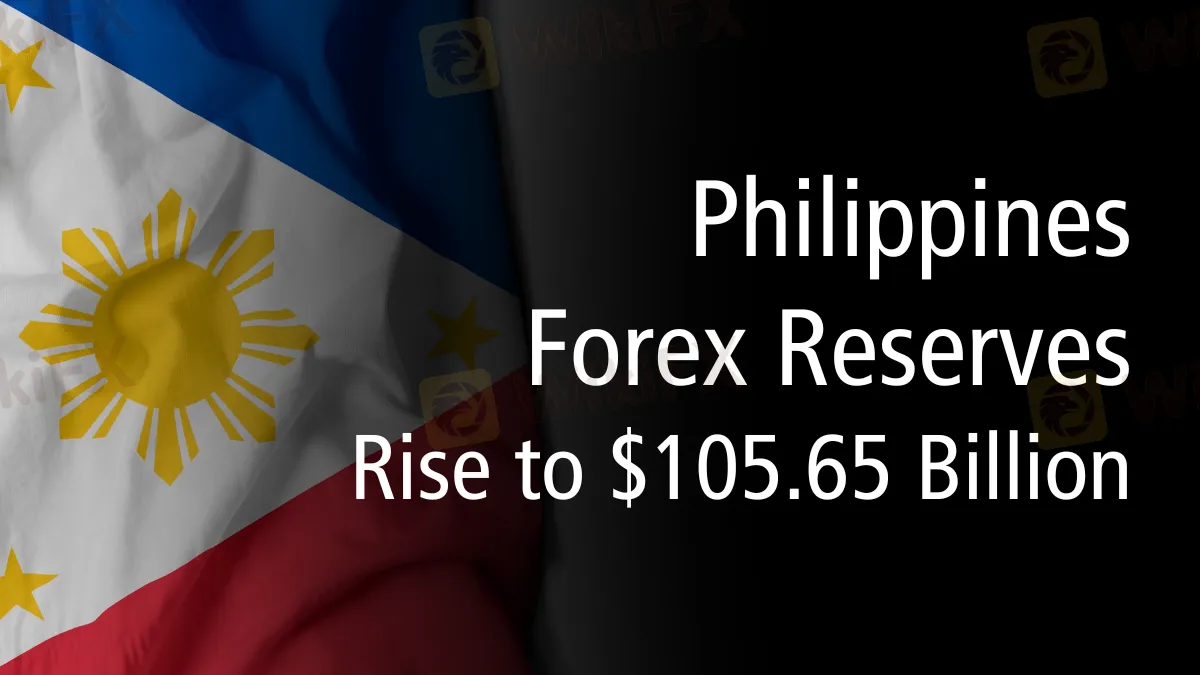简体中文
繁體中文
English
Pусский
日本語
ภาษาไทย
Tiếng Việt
Bahasa Indonesia
Español
हिन्दी
Filippiiniläinen
Français
Deutsch
Português
Türkçe
한국어
العربية
Philippines Forex Reserves Rise to $105.65 Billion
Abstract:The Philippines' foreign exchange reserves increased to $105.65 billion in July, driven by higher gold valuations, strong investment income, and active forex trading.

MANILA, Philippines—The country's foreign exchange reserves have increased slightly, maintaining their position above the $100 billion mark for the 10th consecutive month. As the Bangko Sentral ng Pilipinas (BSP) reported, this steady rise is attributed to the increasing valuations of the central bank's gold holdings and active forex trading.
Preliminary BSP data indicates that the gross international reserves (GIR) rose in July from $105.19 billion in June to $105.65 billion. This number shows a 5.8 percent rise over the $99.9 billion seen in the same month the previous year.
The BSP mostly ascribed the month-on-month rise in the GIR level to upward valuation changes in its gold holdings, which came from gold's increasing value on the global market. The higher GIR level also resulted from the BSP's net income from its overseas investments, the national government's net foreign exchange deposits with the central bank, and profits from active forex trading.
From $9.9 billion in June to $10.3 billion in July, detailed data revealed a four percent increase in the value of the gold reserves of the central bank. Foreign investments also hardly changed to $90.1 billion from $89.9 billion a month earlier. The nation's reserves have also been substantially strengthened by the profits from FX trading.
An important gauge of the state of the nation's economy is the GIR. It shows the total national foreign currency inflows. The GIR serves as a financial cushion to guarantee the government has enough foreign currency reserves amid outside economic upheavals.
The central bank stressed that the present GIR level shows a more than sufficient external liquidity cushion. This buffer may support main income payments and imports of goods and services spanning 7.8 months. Furthermore, it is around 3.8 times the residual maturity and 6.1 times the country's short-term foreign debt, depending on the original maturity.

Generally speaking, a GIR level is considered sufficient if it can support main income payments and at least three months' worth of imports of goods and services. If it can also cover 100% of the country's public and private foreign debt due over the following 12 months, then that is also adequate.
Earlier last week, BSP Governor Eli Remolona Jr. reassured us the Philippines had adequate inflows to sustain its strong foreign reserves. Protection of the nation from any outside economic upheavals depends on this resilience.
Governor Remolona projected more reserve growth next year and expressed hope in the ongoing rise of inflows. “We expect our inflows to climb even further next year and continue to help us to build up our reserves,” he said.
Forex reserves held by the Philippines reached an all-time high in 2020 at $110.12 billion. But in 2021, the cushion dropped to $108.79 billion, then to $96.15 billion in 2022. Notwithstanding this fall, the reserves started to bounce back and will reach $103.75 billion by 2023.
Looking forward, the BSP forecasts that by the end of this year, the nation's dollar reserves will have grown to $104 billion, and by 2025, they will have reached $105 billion. This projection emphasizes the central bank's intention to maintain a strong and robust economic posture amid global challenges.
All things considered, the foreign currency reserves of the Philippines demonstrate resiliency and expansion, therefore offering a strong basis for security and economic stability. Supported by smart fiscal management, positive economic circumstances, and effective currency trading, the consistent increase in GIR levels strengthens the nation's ability to withstand outside financial difficulties.
Learn more about the Philippines' rising forex reserves and stay ahead of the market. Visit WikiFX's news page for the latest insights and updates.

Disclaimer:
The views in this article only represent the author's personal views, and do not constitute investment advice on this platform. This platform does not guarantee the accuracy, completeness and timeliness of the information in the article, and will not be liable for any loss caused by the use of or reliance on the information in the article.
Read more

SkyLine Judge Community: Appreciation Dinner Successfully Held in Malaysia
On August 1, 2025, the SkyLine Judge Appreciation Dinner was successfully held in Kuala Lumpur, Malaysia. As the first WikiFX SkyLine event in Malaysia this year, the dinner not only aimed to express sincere gratitude to expert judges, partners, and industry representatives who have long supported the development of the SkyLine Judge Community but also facilitated in-depth discussions on the future direction of forex trading safety, financial education, and industry transparency.

AssetsFX Scam Alert: 5 Troubling Signs
Forex trading has become a critical game now because of advancements in technology. Due to this Unfortunately, scam brokers have also entered in the Forex market. Therefore, you need to stay alert. This article aims to warn all traders and investors. Read carefully and stay aware.

Forex4Money: Where Your Money Goes In, But Never Comes Out!
Discover how Forex4Money traps investors with fake profit promises and blocked withdrawals. Read real complaints and protect yourself from this unregulated forex scam.

Forex Success Stories: Lessons You Can Use to Win
There can be many ups and downs even for the world’s best forex traders. However, they remain undeterred in their vision to overcome the challenges that come their way. That’s why they form part of forex success stories that continue to inspire generations. One can inherit some lessons to be among successful currency traders. In this article, we will be sharing the lessons you can use to be successful in forex trading.
WikiFX Broker
Latest News
Euro zone inflation holds steady at higher-than-expected 2% in July
Forex Success Stories: Lessons You Can Use to Win
Scam Alert: FCA Issued Warning! Check the List of Unauthorized Brokers Below!
FCA Forex Trading Regulations Explained – What Every Trader and Broker Must Know
FIBO Group: A Closer Look at Its Licenses
Making Money with Forex Weekend Trading
Interactive Brokers Expands Forecast Contracts to Europe
Robinhood Gains 2.3M New Accounts, Platform Assets Close to $280B
CVS shares pop on earnings beat and outlook, as retail pharmacy and insurance units improve
CNBC's Inside India newsletter: Why an India-U.K. trade deal does not make U.S.-India agreement any easier
Currency Calculator


